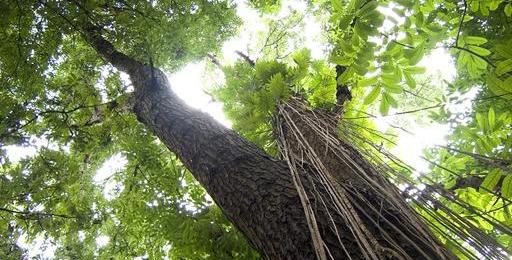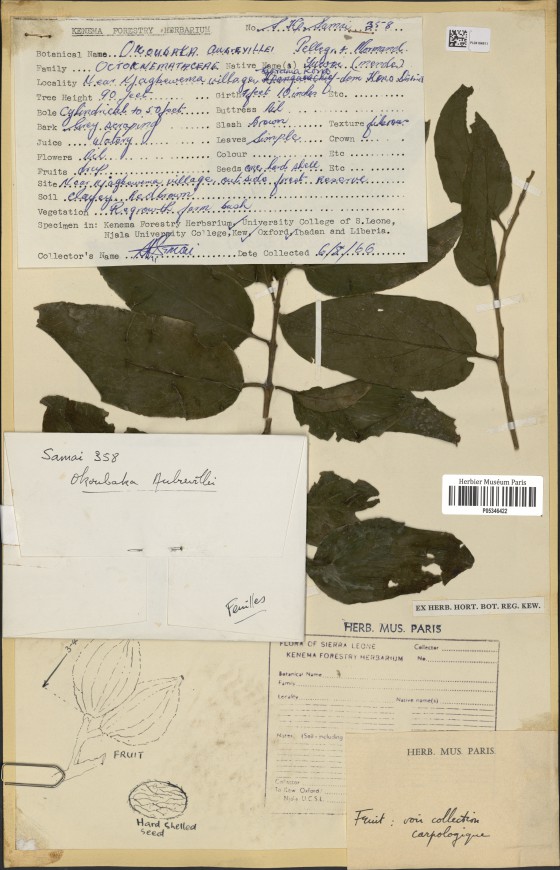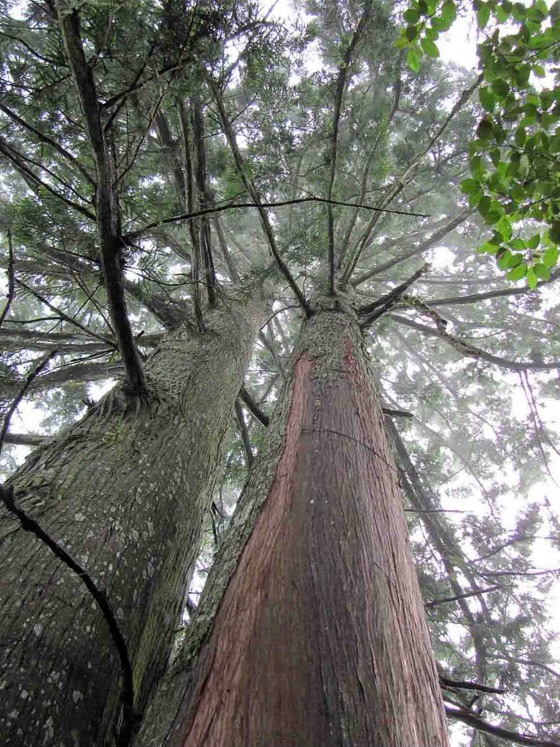
Five extraordinary trees you’ve never heard of
With over 60,000 tree species in the world, there may be one or two that have escaped your notice. Here, GTC reveal some of the world’s most mysterious and surprising tree species, that you really should know about.
1. Okoubaka death tree
Okoubaka aubrevillei
This tree’s name comes from its ‘behaviour’, whereby it feeds on the nutrients stolen from the roots of surrounding trees which eventually weakens and kills them. The natural clearings created by this process are used by local people in West and Central Africa, for various rituals.
Found in the rainforests of West and Central Africa and often hidden from outsiders, this sacred tree species is widely believed to possess magical powers. This makes it a popular choice for traditional medicine and as a result, the bark and seeds of the species are collected across its range. The bark is also traded on the international homeopathy market.
The species is however exceptionally rare; with only 250 trees thought to be left in the wild, it is classed as an Endangered species. The increasing value of the bark as a commodity is fueling on-going harvesting, and eroding the sacred protection afforded to these trees.

A rare glimpse of the mysterious Okoubaka death tree alongside pencil sketches of the fruit and seeds. Credit: MNHN – Paris/GBIF
2. Bastard gumwood
Commidendrum rotundifolium
The bastard gumwood’s notable name was given to it by botanist John Burchell when, in 1906, he visited the small Atlantic island of St Helena, the only place in the world where the species is found. Burchell named other native plant species similarly, but it is not known exactly why the name was chosen.
In 1998 the species was declared extinct in the wild, after the last known wild tree was blown over during a large storm. Since then, another two mature trees were found on opposite parts of the island and these, alongside cultivated populations, have been used in efforts to recover the species.
Due to the success of conservation efforts to date, the species was re-categorised as Critically Endangered in 2016, but numbers remain very low and natural regeneration is still uncommon. This, alongside damage from the jacaranda bug, continues to threaten the species’ survival.
Recently thought to be extinct, the bastard gumwood shows signs of new life. Credit: A Darlow/ARKive.
3. Gergeranian pear
Pyrus gergerana
A ‘lost’ species, the Gergeranian pear is a Critically Endangered tree which can only be found in the mountains of Armenia. The species is likely to be globally important because it is a wild relative of the domestic pear, so could be an important genetic resource to protect the pears we eat against the emergence of new plant diseases.
The last records of Gergeranian pear estimate the global population to be less than 50 trees, all contained within a protected area named after the species. However, the exact location of the 50 trees is unknown and only four individuals have been found in the wild in recent times.
The small population size is a problem for the species but agricultural activities in the forest such as ploughing, hay-making and grazing could also affect seedling survival in its last remaining natural habitat.
Could this be the Gergerianian pear? Credit; Anna Asatryan/Nature Rights Protection.
4. Chinese coffin tree
Taiwania cryptomerioides
Native to eastern Asia, this threatened tree species (listed as Vulnerable on the IUCN Red List) grows to over 70 metres tall.
The timber is highly valued, as it is considered to be light, durable and is said to have a spicy scent. It is used to make a range of products including furniture, bridges, temples and boats, but it was particularly sought after for make coffins in China, a use which gives its common name.
Since it was first studied, seedlings of the tree have always been rare in the wild, and regeneration continues to be limited. This problem, combined with fewer adult trees as a result of logging is threatening the species survival.

The towering Chinese coffin tree. Credit: Center for Plant Conservation, Vietnam.
5. Stinking cedar
Torreya taxifolia
Despite its name, this Critically Endangered tree is in fact more closely related to yews. The ‘stinking cedar’ is one of the rarest conifers in the world; the most recent survey in 2000 estimated 500 and 600 trees but, only 10 individuals actually produce the cones which would allow them to reproduce.
It’s these cones that give the species its common name – once trampled they release an overpowering smell. Found in the USA, the species has seen a decline in its population from over 600,000 trees in the 1940’s.
This decline is largely thought to be caused by fungal pathogens which affect the stem, and stops the trees reaching maturity. The nature of the fungus is not well understood and research is ongoing to try and reduce its spread.
The source of the stink; a Torreya taxifolia cone. Credit: Anon (source Wikipedia).
These trees are just 5 of the 10,000 tree species around the world threatened with extinction and in need of conservation action.
Discover more extraordinary species on our threatened species page, including the aptly named suicide palm, the world’s largest palm tree and New Zealand’s very own Christmas tree.
We need help to research and conserve the 10,000 threatened trees in need of help - get in touch to see what you can do to support our work.
Comments
The endangered trees can be planted in various locations around the world and not limited to their own native habitats to boost the chances of their survivals. They can also be planted in public parks in cities and from there, the seeds can be collected and be planted somewhere else. Just my suggestion that don’t limit the endangered trees to their own locations because their situations there are so bleak and worry not about them being the invasive species in other places because their number is so low.
Hi there. thanks for your comment and interest in the GTC. You can read about the approaches GTC takes to conserve species in the ways you describe (a.k.a ‘ex situ’) here; http://globaltrees.org/news-blog/only-one-in-four-of-the-most-threatened-trees-are-represented-in-ex-situ-collections/. The ultimate aim of these collections for GTC, is to support our mission to secure the future of the world’s threatened tree species in their own habitat. We won’t give up on this ambition, although you’re right, the situation for many of these threatened trees is extremely severe. All these initiatives, of course, are important in saving the genetic diversity of the world’s tree species - we hope you enjoy the article!
Hi Victoria, as a botanist from Nigeria, I wish I can be part of the collaborative effort in saving our tree species. I will be glad to extend a helping hand in our plant protection and conservation efforts worldwide. Thanks.
Hi Bashir Yusuf Abubakar, Thanks for your interest in the GTC and our work. You might be interested in this blog from 2016; http://globaltrees.org/news-blog/tropical-tree-species-restoration-nigeria/ describing work which was led by our partner International Institute of Tropical Agriculture (IITA) based in Ibadan. If you’re interested in getting involved it would be best to contact them in the first instance. Following that, BGCI are the project leads for our work in Nigeria so if you have any specific questions it could be worth contacting them - their details are on our ‘contact us’ page.